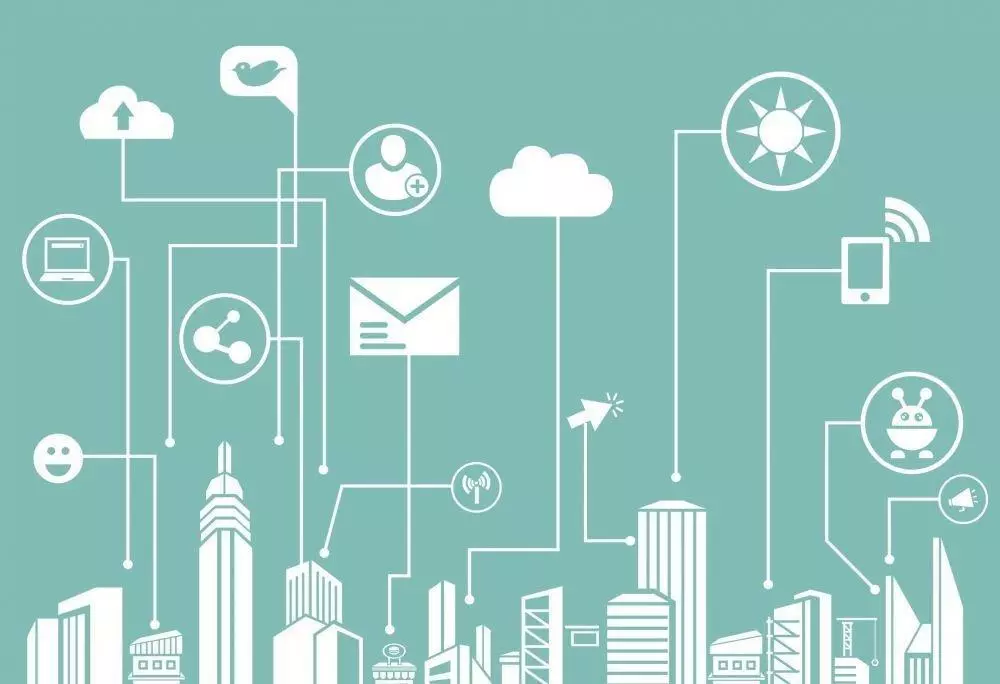Big data analytics have transformed the way companies identify trends, challenges and opportunities.
As businesses transform digitally using innovative technologies, healthcare faces the pressure of following suit. Healthcare providers and executives are utilising big data to improve patient outcomes while lowering costs.

Healthcare is experiencing a major data transformation through the use of advanced analytics and big data technologies. This transformation is a product of both the move toward evidence-based medicine and changes in payment models. In 2017, the healthcare industry will see the following five big data trends as part of this data transformation.
The healthcare Internet of Things
The Internet of Things (IoT) refers to a network of internet-connected computing devices that collect and exchange data using embedded sensors. In healthcare, these devices monitor a wide range of patient behaviour from glucose levels to heart function to blood pressure, and most of this data is unstructured. Sometimes the data collected by these devices requires a follow-up visit with a physician. Smart devices that communicate with each other combined with machine learning could transform this process, potentially replacing a doctor visit with a phone call from a nurse. In Morocco for instance, there are rising offshore big data and business intelligence companies that provide international services such as LOGIGROUP.
Smart medicine dispensers are another example of healthcare IoT. These dispensers can detect whether medicines are being taken as prescribed at home. When a patient is noncompliant, the smart device can initiate a phone call to remind the patient to take her medication. The ability to lower costs and improve patient care are almost limitless with healthcare IoT.
In today’s healthcare environment, more than 75% of patient data is unstructured. This data comes from digital devices and sensors, emails, doctors’ and nurses’ notes, laboratory tests, and third-party sources outside the hospital. The unstructured nature of this data along with the enormous volumes generated make it a perfect match for advanced big data analytics. Through these new technologies, healthcare providers and executives are making great leaps in improving patient outcomes while at the same time lowering costs.
Reducing Fraud, Waste, and Abuse

Modern healthcare systems are promoting the meaningful use of health information technology to improve patient outcomes, reduce healthcare costs, and provide support for reformed payment structures. Insurers are shifting from a fee-for-service model to value-based data-driven payments that reward high-quality cost-effective patient care and demonstrate the meaningful use of electronic health records. This approach requires significant improvements in reporting, claims processing, data management, and process automation.
This shift to value-based payments corresponds with a focus on patient-centric care. Doctors, hospitals, and health insurers need to work together to deliver personal care that is efficient, price conscious, transparent in its billing, and measured by patient satisfaction. To achieve this continuum of care, data transformation is essential. Big data analytics is being used to tackle head on healthcare fraud, waste, and abuse. Using predictive analytics, the Centres for Medicare and Medicaid Services prevented more than $210.7 million in healthcare fraud in one year alone.
When UnitedHealthcare transitioned to a predictive modelling environment to identify inaccurate claims, they generated a 2200% return on investment. The key to identifying fraud is to analyse large unstructured datasets of historical claims and to use machine learning algorithms to detect anomalies and patterns. Healthcare organisations can analyse patient records and billing to detect anomalies such as a hospital’s over-utilisation of services in short time periods, patients receiving healthcare services from different hospitals in different locations simultaneously, or identical prescriptions for the same patient filled in multiple locations.
Predictive Analytics to Improve Outcomes

As the adoption of electronic health records (EHR) accelerates, the amount of patient data is exploding. The Health Information Technology for Economic and Clinical Health (HITECH) Act created a $30 billion federal grant as an incentive to adopt EHRs and encourage the sharing of patient information among clinicians to lower costs, speed diagnosis, and improve patient outcomes. Being able to analyse structured and unstructured data across multiple sources aids in the accuracy of diagnosing patient conditions, matching treatments with outcomes, and predicting patients at risk for disease or readmission.
Using predictive modelling on EHR data enables the earlier diagnosis of a variety of illnesses, significantly reducing mortality rates. For example, congestive heart failure accounts for the most healthcare spending of any disease in the US. The earlier it is diagnosed, the better it can be treated and complications avoided. Unfortunately, early stage congestive heart failure can be easily missed. Georgia Tech recently proved that machine learning algorithms could look at more factors in patients’ charts than doctors, and by adding additional features, could substantially increase the ability of the model to identify people who have congestive heart failure.
There are enormous benefits from big data analytics, but also massive potential for exposure that could result in anything from embarrassment to outright discrimination. Big data, as its proponents have been saying for nearly a decade now, can bring big benefits: advertisements focused on what you actually want to buy, smart cars that can help you avoid collisions or call for an ambulance if you happen to get in one anyway, wearable or implantable devices that can monitor your health and notify your doctor if something is going wrong.
Real-time Monitoring of Patients

Healthcare facilities are providing more proactive care to their patients by continuously monitoring vital signs. Data from these monitors can be analysed in real time, and if a patient’s condition changes, a care provider can be alerted instantly. Processing real-time events with machine learning algorithms provides physicians with insights to help them make lifesaving decisions.
Wearable sensors and devices allow caregivers to interact with patients in new ways, making healthcare more convenient and persistent. For example, applications can remotely monitor patients with chronic obstructive pulmonary disease. Other monitors track the weight of patients battling obstructive heart disease to detect fluid retention before hospitalisation is required. Still others track a child’s asthma medication usage to ensure home caregivers are administering it properly, which reduces visits to the ER. Advanced big data analytics is able to work with the unstructured data generated by these sensors.
The move toward evidence-based medicine requires clinicians to make use of all patient data available and to factor in clinical and advanced analytics. Capturing extensive patient data allows for better care coordination and patient engagement. Gaining this comprehensive view of the patient can also eliminate redundant and expensive testing, reduce errors in administering and prescribing drugs, and even reduce mortality rates.








Leave your comments
Post comment as a guest